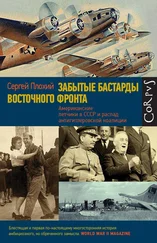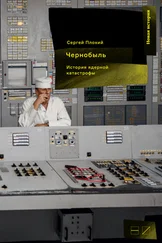True, there were also some problems with the location. Underground waters were coming too close to the surface, and a great deal of soil would have to be brought in to ensure a solid foundation for the buildings. Kopachi was distant from sources of construction materials, including rocks and granite; only sand was available locally. But the surveyors considered those problems manageable. Because the area was not very agriculturally productive, converting it to an industrial site would have little impact on the rural economy. The future plant’s cooling pond—the reservoir needed for the functioning of the plant—would take up the biggest chunk of the territory allocated for the construction of the plant and the satellite city—altogether more than 1,400 hectares, or 3,460 acres, of pastureland, 130 hectares (320 acres) of forest, 96 hectares (240 acres) of cultivated land, and 50 hectares (120 acres) of gardens planted by the local population.
Kopachi was ruled to be the best of the sixteen locations considered by the commission. The name of the facility was eventually changed from the Central Ukrainian Plant to the Chernobyl Plant. The “center” had moved north to the very border with Belarus. There is no indication that the Belarusians were ever consulted. 12
The construction of the plant began on Briukhanov’s watch. In the summer of 1970, he moved his headquarters from the rented hotel room to an office of less than six square meters in a mobile construction workers’ barrack. From there he commanded his growing cohort of engineers, checked on the construction crews, and visited high offices in Kyiv and Moscow. Grigorii Medvedev, who came to the Chernobyl plant in the winter of 1971 to take the position of a deputy chief engineer, had idyllic memories of Chernobyl at the start of construction: “There was a sparse forest of young pines all around, with an intoxicating atmosphere unmatched anywhere else. There were sand hills covered with a low-growth forest and patches of pure yellow sand against a background of deep green moss. No snow to be seen. Green grass warmed by the sun dotted the area. Silence and a sense of primeval creation.” 13
The silence did not last very long. Excavators working around the clock soon removed some 700,000 cubic meters of soil for the foundations of the new unit. In August 1972, Petro Neporozhny, the all-Union minister of energy and electrification, visited the site himself to witness the first pouring of concrete. Speeches were delivered and pledges made, but it would take much longer than the authorities expected to complete construction and make the reactor operational. It was supposed to be up and running in 1975, but there were problems with the supply of reactor parts and related equipment. In April 1975, with the original deadline all but missed, Volodymyr Shcherbytsky, who had been promoted from head of government to party boss of Ukraine, appealed directly to Moscow. Things finally started moving, and the requisite equipment arrived. In August 1977, the first nuclear fuel was loaded into the core of the reactor. In September it began operation and was connected to the grid, and in December Briukhanov signed the documents declaring the reactor fully operational. 14
It was only then that Briukhanov made the transition from director mainly responsible for the construction of the plant to director predominantly responsible for its operation. “The year 1977 will go down in the history of Soviet atomic energy as the year of the birth of an energy giant on the Prypiat,” he wrote with satisfaction in one of Ukraine’s leading newspapers at the end of the year. A new era had indeed begun. In December 1978, Unit 2 was connected to the grid. Three years later, in December 1981, Unit 3 produced its first electricity, and Unit 4 followed in December 1983. 15
The December dates of completion of units or their connection to the grid were not coincidental. The pressure to launch reactors before the end of a given year was enormous—party leaders and ministry officials wanted to present achievements in their annual reports, while construction crews and operational personnel would not get their hefty bonuses if they did not complete planned tasks by year’s end. “Interestingly enough, no one could speak aloud of the impossibility of going onstream in a given year until December 31,” recalled Anatolii Diatlov, a nuclear engineer who first arrived in Prypiat in 1972.
None of the units were completed on time. Upon his arrival, Diatlov noticed a slogan above the entrance to the dining hall calling on construction workers and engineers to launch the first reactor in 1975. As 1975 passed without a working reactor, they changed “5” to “6” and then to “7.” Every year representatives from the ministry would come and insist on a new unrealistic date that everyone knew could not be fulfilled. “And at first there would be jitters because of strict insistence on fulfillment of a timetable that was incapable of fulfillment from the moment of its creation,” remembered Diatlov. “Tough production meetings and summons to work at night. Delays inevitably increased, vigilance fell off, and normal work began. Until the supervisor’s next visit.” 16
Briukhanov vividly remembered the launch of every successive unit. He was often critical of the construction crews. At a meeting of the party committee for the city of Prypiat, he chastised them, saying, “Incompetence in production, that is, in the plant workshops, makes itself felt on construction sites in poor-quality parts and poor work. Take something as simple as calculating corners. Crooked openings for doors and windows, crookedly nailed finishing elements, wrong angles in the installation of plumbing.” Briukhanov was in a difficult position. He was the one who had to sign papers attesting to the satisfactory completion of the work. The bosses, for their part, wanted to report the fulfillment of plans, and the construction workers wanted their bonuses, but Briukhanov was responsible for the operational soundness and safety of the units. The problem was that the government was at once contractor and client. The plant and the construction directorate both reported to the same bosses at party headquarters in Kyiv and Moscow. If Briukhanov complained too much about problems with the work done by the construction directorate, he could easily lose his job. 17
Finally Briukhanov’s car approached Prypiat, the city that had been built before his own eyes and with his active participation. Sometimes he thought he had had enough of the place. He would feel tired and want to try something else. They had asked him in Moscow whether he would be interested in going abroad, for example, to help build a nuclear power plant in Cuba, where Soviet architects and engineers had begun construction of the country’s first nuclear reactor in 1983. But those were moments of weakness. Briukhanov stayed in Prypiat.
The city was only 3.5 kilometers north of the power plant. The road from the station turned into Prypiat’s main street, the broad Lenin Boulevard, with trees and flowers planted in the median between the wide lanes leading to the town’s main square. Located there were the administrative building housing party headquarters and the city hall, the palace of culture, called the “Energy Worker”; and the hotel, named Polissia, meaning “forested area,” a reference to the huge ecological region covering most of northern Ukraine from the Dnieper in the east to the Polish border in the west. The main square was at the intersection of the city’s two main boulevards, one named after Lenin and the other, perpendicular to it, after the founder of the Soviet nuclear program, Igor Kurchatov. On the corner of the two boulevards, facing the square, stood the town’s White House, a nine-story apartment building that housed the city’s elite. 18
Читать дальше
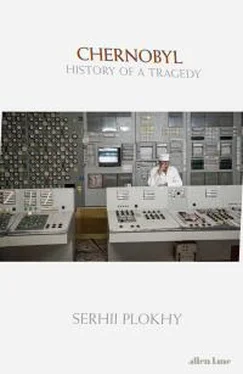

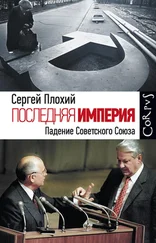
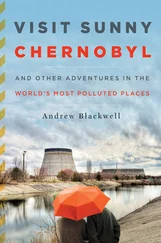


![Сергей Плохий - Чернобыль - История ядерной катастрофы [litres]](/books/385171/sergej-plohij-chernobyl-istoriya-yadernoj-katastrof-thumb.webp)
![Сергей Плохий - Человек, стрелявший ядом [История одного шпиона времен холодной войны]](/books/405163/sergej-plohij-chelovek-strelyavshij-yadom-istoriya-od-thumb.webp)


![Сергей Плохий - Потерянное царство. Поход за имперским идеалом и сотворение русской нации [c 1470 года до наших дней]](/books/433093/sergej-plohij-poteryannoe-carstvo-pohod-za-impersk-thumb.webp)
